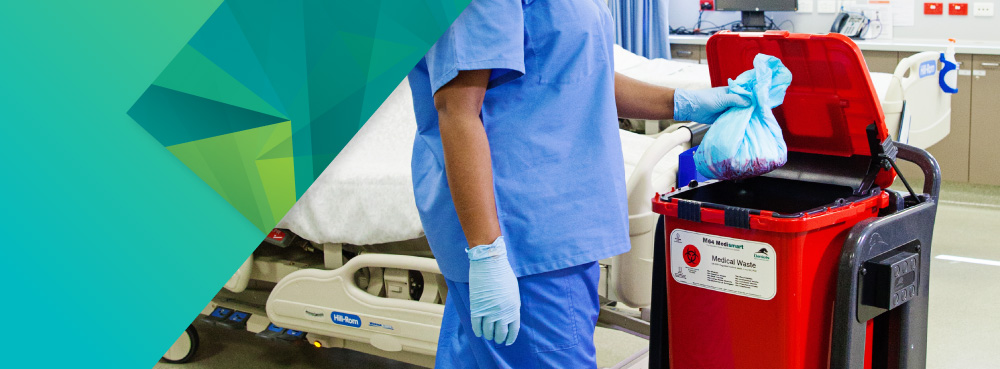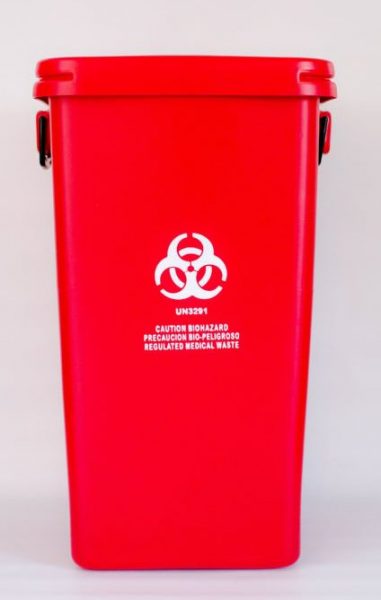Beyond Clean-up: Ensuring Security with Specialist Medical Waste Removal
The Importance of Correct Clinical Garbage Disposal: A Guide for Health Care Facilities
Proper medical garbage disposal is an important element of healthcare center management, making sure the safety and health of clients, personnel, and the setting. From comprehending the different groups of clinical waste to adhering to regulative needs, health care centers should embrace reliable waste segregation techniques and pick appropriate disposal approaches. Nonetheless, the significance of appropriate medical garbage disposal goes beyond plain conformity; it is a duty that needs recurring training and education and learning for team. In this overview, we will certainly explore the various elements of clinical garbage disposal and highlight the necessary steps that health care centers must take. By executing these methods, medical care facilities can reduce threats, protect public health and wellness, and add to a cleaner, much safer atmosphere.
Comprehending Medical Waste Categories
Understanding medical waste classifications is critical for appropriate disposal in healthcare centers. Clinical waste is a wide term that incorporates various kinds of waste produced in health care setups, such as labs, hospitals, and facilities. Classifying medical waste assists make certain that it is managed, stored, and disposed of securely and in conformity with relevant guidelines.
There are several groups of clinical waste that healthcare centers need to be knowledgeable about. These groups include transmittable waste, sharps waste, pharmaceutical waste, chemical waste, and contaminated waste (medical waste disposal services with WasteX). Each category has details characteristics and needs various disposal techniques to minimize the threat of damage to medical care workers, clients, and the setting
Transmittable waste, as an example, refers to throw away infected with possibly transmittable materials, such as blood, body fluids, and cells. Sharps waste includes needles, syringes, and other sharp items that can trigger injury or transfer infections. Pharmaceutical waste includes ended or extra medications, while chemical waste contains harmful chemicals utilized in clinical treatments. Radioactive waste includes materials contaminated with contaminated compounds, such as nuclear medication materials.
Compliance With Regulatory Needs
Health care facilities have to guarantee conformity with governing needs for proper medical garbage disposal. Regulative bodies, such as the Epa (EPA) and the Occupational Safety and Wellness Administration (OSHA), have developed guidelines and regulations to secure public health and the environment. These policies outline the correct handling, storage space, transportation, and disposal of clinical waste.
Compliance with regulatory requirements is vital for medical care facilities to prevent legal fines, reputational damage, and possible damage to human wellness and the setting. Failing to abide by these guidelines can result in penalties, legal actions, and even the suspension or revocation of running licenses.
To ensure conformity, healthcare centers should develop detailed waste management programs that include staff training, correct waste segregation, and making use of proper containers and labels. Normal audits and evaluations need to additionally be carried out to recognize any non-compliance issues and resolve them promptly.
It is necessary for health care centers to keep up to date with modifications in laws and upgrade their waste monitoring practices as necessary. This can be achieved by actively checking updates from regulatory bodies and participating in training programs and workshops.
Carrying Out Reliable Waste Partition Practices
To guarantee correct medical garbage disposal, medical care facilities should carry out reliable waste partition techniques. Waste partition is a vital step in the general waste management process, as it assists reduce the danger of infection, protects against cross-contamination, and ensures the risk-free disposal of different kinds of waste. Effective waste segregation methods include separating clinical waste into various groups based upon its features and prospective dangers.
One typical technique is the partition of sharps waste, such as scalpels and needles, from various other kinds of medical waste. Sharps waste ought to be placed in puncture-resistant containers to avoid injuries and possible infections. Additionally, contaminated materials, such as drugs and chemicals, should be divided from basic medical waste to stop environmental contamination.
Correct labeling and color-coding of waste containers are essential for effective waste segregation. Clear and noticeable labels ought to be placed on each container to show the kind of waste it includes and any special the original source delivery needs - medical waste disposal services with WasteX. Additionally, color-coding can be utilized to set apart in between various waste groups, making it much easier for healthcare personnel to get rid of and identify of waste properly
Normal training and education and learning for healthcare personnel is critical for the successful application of waste partition practices. Personnel ought to be educated on the different waste classifications, proper segregation techniques, and the value of adhering to waste monitoring protocols. This will assist make sure conformity and uniformity in waste partition techniques throughout the facility.
Finding Appropriate Disposal Approaches
Proper selection of proper disposal approaches is important in making sure the risk-free and eco liable management of medical waste in healthcare facilities. Healthcare facilities create a selection of clinical waste, consisting of sharps, transmittable waste, pharmaceutical waste, and chemical waste - medical waste removal services. Each sort of waste requires specific disposal approaches to decrease the risk of contamination, injury, and environmental harm
One common disposal approach for medical waste is incineration. Incineration includes the regulated burning of waste at high temperatures.

Chemical disinfection is an additional technique used for particular types of clinical waste, such as pharmaceutical waste. This method utilizes chemicals to neutralize or destroy contaminants. Nonetheless, it is essential to pick chemicals that are safe and eco pleasant.
In many my website cases, garbage dump disposal might be appropriate for non-hazardous clinical waste (medical waste disposal services with WasteX). Nonetheless, correct partition and product packaging are critical to stop leak or contamination.
Inevitably, medical care facilities need to very carefully examine the qualities of their medical waste and select appropriate disposal approaches that focus on security, environmental protection, and governing conformity. Regular training and surveillance are necessary to make sure that healthcare staff adheres to appropriate disposal procedures.

Training and Educating Personnel on Correct Disposal Treatments
Staff education and learning and training play an important duty in ensuring the proper disposal of medical waste in healthcare centers. It is vital that all staff members, including physicians, nurses, service technicians, and assistance personnel, receive thorough training on correct disposal treatments. This training must cover the different sorts of clinical waste, their prospective threats, and the suitable approaches for handling, setting apart, and throwing away them.
One of the key objectives of staff education and learning and training is to ensure that all health care experts understand the value of proper disposal treatments and the possible repercussions of inappropriate waste management. They need to be familiar with the risks connected with clinical waste, such as the transmission of infections and the contamination of the environment. medical waste removal services. By understanding these dangers, personnel will certainly be extra determined to follow correct disposal protocols and take the required preventative measures to shield themselves, their colleagues, and the neighborhood
Training must additionally cover using individual protective equipment (PPE) and the correct methods for dealing with medical waste. Personnel ought to be enlightened on how to identify and set apart different kinds of waste, such as sharps, contagious waste, and harmful chemicals. They must likewise be educated on the correct use waste containers, such as sharps containers and biohazard bags, in addition to the value of labeling and securing these containers appropriately.
Furthermore, team education and learning and training should include normal updates and refresher programs to make certain that medical care experts stay informed about the latest regulations and ideal methods in medical waste disposal. This ongoing education and learning is important to preserve a high level of recognition and conformity amongst team member.
Verdict
In verdict, proper clinical garbage disposal is of utmost significance for healthcare centers. Recognizing the different groups of medical waste and abiding by governing demands ensures the safety and well-being of both health care workers and the basic public. Executing efficient waste segregation methods and choosing proper disposal techniques are crucial in stopping the spread of infectious diseases and shielding the environment. Training and informing personnel on correct disposal procedures is important for maintaining a secure and tidy healthcare facility.
From comprehending the various categories of medical waste to abiding with regulative demands, health care centers must take great site on efficient waste segregation techniques and choose proper disposal techniques. These categories consist of contagious waste, sharps waste, pharmaceutical waste, chemical waste, and contaminated waste.To ensure proper medical waste disposal, health care centers must carry out efficient waste partition methods. Waste partition is a crucial action in the total waste management procedure, as it helps lessen the danger of infection, prevents cross-contamination, and makes sure the risk-free disposal of different kinds of waste. Health care facilities produce a range of clinical waste, consisting of sharps, contagious waste, pharmaceutical waste, and chemical waste.